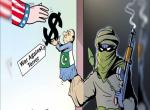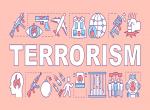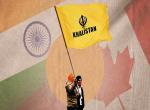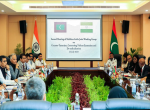Successful completion of INS Arihant’s war patrol signaled the operationalisation of India’s nuclear triad. This event has been deliberated extensively by the academics, professionals and media the world over. Whilst some have appreciated this event as an inflection point that has elevated India in the league of Great powers, others see it as an incremental adjunct to India’s security mosaic.
Interestingly, in the heat of the moment, none have been able to read the holistic impact of a series of discreet steps of which Arihant is but one episode. Indeed, such analysis can effectively be done only when the dust settles and wisdom dawns in retrospect. India’s benign stance for decades was not only perceived as national character, but the quest for maintaining peace in South Asia was ill-conceived by Pakistan as laissez faire of our strategic elites. Politician, Generals, bureaucrats and think-tanks across the globe have pondered endlessly for a counter-strategy against nuclearised-terrorism, i.e. pursuit of terror under nuclear umbrella. Some had even conceded that attrition was the only way forward against the nature of despicable warfare unleashed by the Pakistan (Land of the Pure!) on India. But this has started to change. India has ultimately discovered the right security posture against Pakistan’s egregious designs.
Pakistan is the only country in the committee of 191 nations that calibrates nuclear threat and terrorism on one hand and yet maintains diplomatic poise in international fora unabashedly. Notwithstanding the grey listing by Financial Action Task Force (FATF), the ‘terrorist-drug peddler’ nexus are being nurtured into a self-sustaining industry. Drug profits earned in the Indian State of Punjab are being ploughed back to fund the terrorism in Jammu and Kashmir (J&K). A well oiled financial machinery based on drug trafficking, terror infrastructure supervised by the Pakistan Army, and tacit approval of civilian polity that had successfully traumatized some locales in India, especially the State of J&K for the past seven decades.
Jammu and Kashmir Shining
Despite the best efforts of the Pakistani establishment to incite terrorism, the State of J&K in India has witnessed phenomenal socio-economic growth. Some of the salient aspects that belie claims of terror operatives in Pakistan and J&K are1:-
- The Gross State Domestic Product (GSDP) grew at 10.3 percent from 2012 to 2017. It is expected to grow at 11.71 percent in the FY 2018-19 and reach US $ 24.42 bn.
- Food processing and agro-based industries are thriving in the State due to an excellent business eco-system in horticulture and floriculture. Apple production has reached 1.74 million metric tons (MMT) in the FY 2017-18.
- As on July 2018, J&K has achieved an installed electric power capacity of 3389.21 MW.
- In FY 2017-18, exports of carpets, woolen shawls and papier-mâché stood at US$ 30.42 million, US$ 19.58 million and US$ 1.05 million.
- Total tourist arrivals to the state reached 14.32 million in 2017 out of which 14.24 million were domestic tourists and 79,770 were foreign tourists.
In terms of Human Development Index (HDI), J&K ranks 7th amongst major States of India and is second only to Kerala in healthcare and education2. In contrast, according to United Nations Development Programme (UNDP) data rereleased for 2017, Pakistan ranks low on democracy index with a score of less than 4 out 10 and a HDI of a low 150 out of 189 countries3. Pakistan ranks the highest in inequality (overall 29.6 percent) in South Asia in terms of life expectancy at birth (31 percent) and education (46.2 percent)4.
So what has changed in last couple years that Pakistan’s asymmetric warfare through nuclearised-terrorism against India seems to be unraveling along with the State? While some changes are attributable to India’s security posture, others are due to Pakistan’s own doings. Together, the situation has reached a tipping point to India’s advantage, which needs to be retained.
Unfathomable Defence Asymmetry with India
India’s defence budget for the FY 2018-19 is US $ 46.16 bn, of which US $ 13.02 bn has been earmarked for new acquisition. In comparison, Pakistan’s total defence budget is US $ 9.6 bn5. Under these austere financial conditions, India’s heavy retaliation at the Line of Actual Control (LoC) to check terror infiltration is proving to be difficult for Pakistan Army to sustain its terror operations in J&K. The killing of six infiltrating Lashkar-e-Toiba (LeT) in Anantnag6 district on November 23, 2018 by Indian security forces is an indication of Pakistan failing to push terrorist into India before the snow fall.
The conventional and asymmetry between Pakistan and India continues to grow in other arms of the defence as well. The nuclear triad had unsettled even the nuclear parity that Pakistan once enjoyed. Thus, India has won the emblematic arms race in South Asia, making Pakistan strategically irrelevant in Asian geo-politics despite being a nuclear weapon state. India needs to capitalise on this asymmetry and be prepared for a short but simultaneous and large-scale debilitating attack with its Special Forces in retaliation to terror attacks by Pakistan.
Pakistan, a Liability for its Allies
Russia, India, China, Japan and the US have emerged as great power arbitrators in Asia. The heads of States of these countries have been meeting at various forums both informally and formally. India’s diplomatic initiatives have elevated her significance in the Indo-Pacific on one hand and influence in SCO, BRICS, RCEP, RIC, EAS etc on the other. Thus, an informal great power concert has emerged between these powers. Unlike North Korea, Pakistan does not derive its strength so much from its nuclear weapons, as it does from patronage of great powers. Having lost favour with the US and owing to India-China concert, Pakistan is losing its leverages steadily. It has been further frustrated by its inabilities to protect Chinese nationals and to complete the CPEC projects. The terror attack on Chinese consulate on November 23, 2018, in Karachi is a case in point.
Coupled with its financial morass, Pakistan has turned out to be a liability for its allies including China and Saudi Arabia. India must continue to isolate Pakistan diplomatically till it completely gives up on sponsoring terror. Weakening Pakistan’s influence in Afghanistan and neighbourhood will be in region’s interest.
Dwindling Legitimacy of Pakistan Army
Pakistan army has traditionally presented itself as the guardian of the nation, yet in reality it has created instability by running the foreign and security policies and destroying the democratic institutions of the country. It also gets a disproportionate share of the national apportions at the cost of the poor and middle class. The 'Milbus' (military business) according to Dr. Siddiqa, runs an expansive incorporate for the personal benefit of the military fraternity7. Even though the state of Pakistan is exasperating under its debt burdens, amplified by the China-Pakistan-Economic-Corridor (CPEC), Pakistan Army has made no concessions in its military expenditure; neither has it parted with its private wealth for national cause. The Indian Army must maintain an offensive posture on the LoC and expose the bluff and hubris of the Pakistan Army.
Deepening Fault Lines
Broadly, the fault lines in Pakistan can be classified under political, social and religious, economic, ethnic and security. The political fault lines include civil-military relations and moderates versus extremists. The social and religious fault lines encompass the sectarian divide between the Sunnis and Shias and the intra-sectarian feuds. The ethnic fault lines include those between provinces – Punjabi versus Baluch versus Pakhtun versus Sindhi. Finally, there is the security and administrative fault line which includes the declining capacity of the state to provide public goods to the people8.
Many of these fault lines have manifested as insurgency. In the current year of 2018 till the month September, 313 civilians, 127 security forces and 135 insurgents have been killed in Pakistan9. India must support the self-determination of hapless population of the neglected Pakistani provinces, and avoid large scale migration into India from a failing Pakistan – a Bangladesh redux.
Prognosis
Nuclear tests of 1998 had momentarily created parity between India and Pakistan. However, in the ensuing two decades, India has emerged as a reckonable power while Pakistan has declined into a tottering state. Indian democracy, combined with its diplomacy, has spurred its success, while the dominance of the Pakistan military has undermined its democracy and turned it into a failing state10. Despite its financial decline and social chaos, Pakistan Army is unlikely to give up on state sponsorship of terrorism. In this backdrop, India should intensify its offensive-defence security posture to include:-
- Capitalise and widen the asymmetry, both in conventional and nuclear domain. A 24x7x365 deterrence patrol will be essential for an effective triad.
- Be prepared for short but simultaneous and large-scale debilitating attacks across the border in response to terror strikes by Pakistan. The Indian Army must maintain an offensive posture on the LoC and expose the bluff and hubris of the Pakistan Army.
- Weakening Pakistan’s influence in Afghanistan and neighbourhood will be in region’s interest.
- Enhance the concert with the US, China, Japan and Russia in order to stymie Pakistan’s strategic leverages and relevance in South Asia. Continue to isolate Pakistan diplomatically till it completely gives up on sponsoring terror.
- Support the self-determination of hapless population of the neglected Pakistani provinces to avoid large scale migration.
- https://www.ibef.org/states/jammu-kashmir.aspx#login-box 2017
- http://risingkashmir.com/news/human-development-performance-and-prospects
- http://www.eiu.com/topic/democracy-index
- http://hdr.undp.org/sites/all/themes/hdr_theme/country-notes/PAK.pdf
- https://medium.com/@skunkworksLH/2018-2019-defence-budget-of-india-pakistan-bangladesh-and-myanmar-d76b4ed250a2
- https://economictimes.indiatimes.com/news/defence/ceasefire-violations-india-pakistan-armies-hold-flag-meeting-on-loc/articleshow/66773074.cms
- https://economictimes.indiatimes.com/news/defence/dominance-of-military-turns-pakistan-into-a-failing-state-says-experts/articleshow/63426170.cms
- http://www.claws.in/images/journals_doc/544761676_SushantSareen.pdf
- http://www.satp.org/satporgtp/countries/pakistan/database/casualties.htm
- https://economictimes.indiatimes.com/news/defence/dominance-of-military-turns-pakistan-into-a-failing-state-says-experts/articleshow/63426170.cms
End Notes:
(The paper is the author’s individual scholastic articulation. The author certifies that the article/paper is original in content, unpublished and it has not been submitted for publication/web upload elsewhere, and that the facts and figures quoted are duly referenced, as needed, and are believed to be correct). (The paper does not necessarily represent the organisational stance... More >>
Image Source: https://thewillnigeria.com/news/wp-content/uploads/2018/01/pak-and-terrorism-1475646265-1.jpg











Post new comment